- Growing Feijoa in the Garage: Essential Tips
- 1. Choose the right variety
- 2. Provide adequate light
- 3. Maintain the right temperature
- 4. Provide proper ventilation
- 5. Water and fertilize regularly
- Choosing the Right Feijoa Variety for Indoor Gardening
- 1. Dwarf Varieties
- 2. Self-Pollinating Varieties
- 3. Cold Hardy Varieties
- 4. Fruit Flavor
- 5. Growing Requirements
- Creating the Ideal Growing Environment in Your Garage
- 1. Adequate Lighting
- 2. Controlling Temperature and Humidity
- 3. Proper Ventilation
- 4. Optimal Soil and Watering
- 5. Pollination
- Nurturing Your Feijoa Tree: Soil, Water, and Sunlight Requirements
- Soil Requirements
- Water Requirements
- Sunlight Requirements
- Feijoa Tree Care Tips
- Container Selection and Preparation: Setting the Stage for Success
- 1. Choose the Right Container
- 2. Prepare the Container
- 3. Ensure Proper Drainage
- 4. Consider Container Placement
- 5. Provide Adequate Watering and Fertilization
- Selecting the Proper Container for Feijoa Trees
- 1. Select a container with adequate size
- 2. Consider material and durability
- 3. Ensure proper drainage
- 4. Check for insulation
- 5. Opt for a movable container
- Preparing the Container for Feijoa Planting
- Choosing the Right Container
- Preparing the Container
- Positioning the Container
- Feijoa Tree Planting and Care: Step-by-Step Guide
- 1. Choosing a Location
- 2. Planting the Tree
- 3. Watering
- 4. Fertilizer and Mulching
- 5. Pruning
- 6. Pests and Diseases
- 7. Harvesting
- Planting Your Feijoa Tree in the Container
- 1. Choosing the Right Container
- 2. Soil Mix
- 3. Planting the Tree
- 4. Watering
- 5. Placement
- Essential Care Practices to Ensure Your Tree Thrives
- Q&A:
- Can I grow feijoa in my garage?
- What are the ideal conditions for growing feijoa in the garage?
- Can I use a grow light for growing feijoa in the garage?
- How often should I water feijoa plants in the garage?
- How long does it take for feijoa plants to bear fruit in the garage?
- Video: 5 ways to get your Feijoa or Pineapple guava to fruit in the desert!
Feijoa is a delicious and nutritious fruit that is native to South America. Its unique flavor, which is a combination of pineapple, guava, and strawberry, makes it a favorite among fruit lovers. While feijoa is commonly grown outdoors, it is also possible to grow it in your garage, especially if you live in a colder climate. In this article, we will share five tips on how to grow feijoa in your garage and produce tastier homegrown fruit.
1. Choose the right variety: When growing feijoa in your garage, it is important to choose a variety that is suitable for indoor cultivation. Look for dwarf or compact varieties that are known for their ability to thrive in containers. Some popular varieties for indoor growing include Apollo, Coolidge, and Mammoth.
2. Provide adequate light: Feijoa plants require a lot of sunlight to produce sweet and flavorful fruit. Position your garage in a location that receives at least six hours of direct sunlight per day. If your garage does not receive enough natural sunlight, consider using grow lights to supplement the light.
3. Control the temperature: Feijoa is a subtropical plant that thrives in temperatures between 60 and 80 degrees Fahrenheit. Make sure your garage is well insulated and can maintain a consistent temperature within this range. If necessary, use a space heater or a cooling fan to regulate the temperature.
4. Optimize humidity: Feijoa plants prefer high humidity levels, especially during the growing season. To increase the humidity in your garage, place a tray filled with water near the plants or use a humidifier. Regularly mist the leaves with water to simulate the natural environment.
5. Provide proper care: Feijoa plants require regular watering, especially during the growing season. Keep the soil moist but not soggy, and avoid overwatering to prevent root rot. Fertilize the plants every two weeks with a balanced fertilizer to provide essential nutrients for growth and fruit development.
In conclusion, growing feijoa in your garage can be a rewarding experience that allows you to enjoy homegrown fruit even in colder climates. By choosing the right variety, providing adequate light, controlling temperature and humidity, and giving proper care, you can produce tastier feijoa fruit that rivals those grown outdoors. Follow these tips and get ready to savor the unique and delightful flavor of fresh feijoa right from your garage!
Growing Feijoa in the Garage: Essential Tips
1. Choose the right variety
When growing feijoa in the garage, it is important to select the right variety that is suitable for container cultivation. Look for dwarf or compact varieties that are well-suited to growing in small spaces. Some popular choices include ‘Coolidge’, ‘Apollo’, and ‘Gemini’.
2. Provide adequate light
Feijoa plants require a minimum of 6 hours of direct sunlight per day to thrive and produce fruit. If natural light in your garage is limited, consider using supplemental grow lights to provide the necessary light intensity. Aim for a light spectrum that is optimized for plant growth.
3. Maintain the right temperature
Feijoa plants prefer temperatures between 60-80°F (15-27°C) during the growing season. Garage environments can often experience fluctuations in temperature, so it is important to monitor and adjust as necessary. Consider using a space heater or fan to regulate the temperature and create a suitable growing environment.
4. Provide proper ventilation
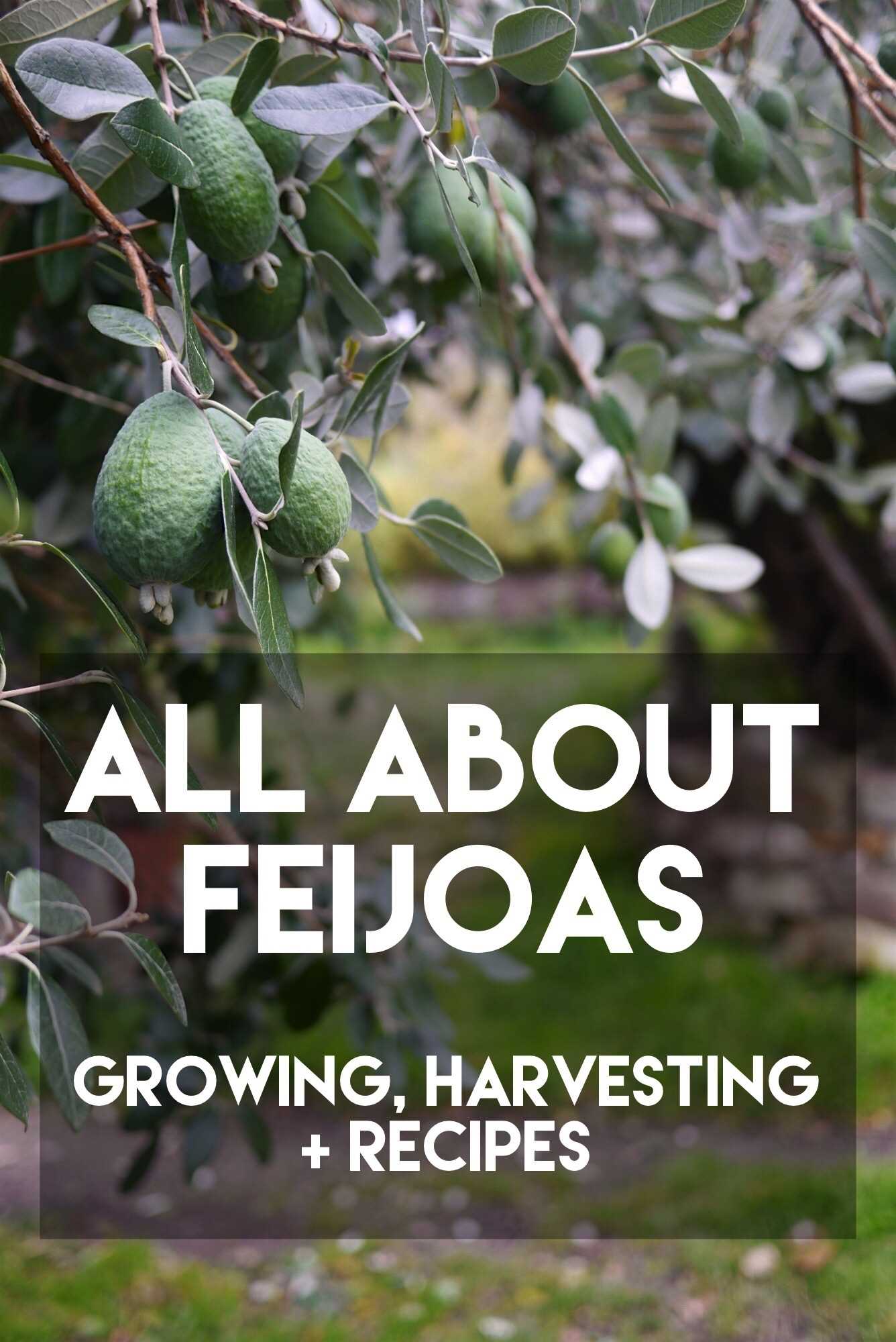
Good air circulation is crucial for feijoa plants to prevent the development of fungal diseases. Ensure that your garage has adequate ventilation by using fans or by leaving a small window cracked open. This will also prevent the buildup of excess humidity, which can negatively impact plant health.
5. Water and fertilize regularly
Feijoa plants require regular watering to keep the soil consistently moist, but not waterlogged. Check the moisture level of the soil regularly and adjust your watering schedule accordingly. Additionally, fertilize your feijoa plants every 2-3 months with a balanced fertilizer to provide them with the necessary nutrients for healthy growth and fruit production.
| Tips |
|---|
| Monitor the humidity levels in your garage to ensure it doesn’t get too humid for the feijoa plants. |
| Consider using a fan or small air circulation system to improve air flow within the garage. |
| Prune your feijoa plants regularly to maintain a compact size and improve air circulation. |
| Inspect your plants regularly for pests or signs of disease, and take appropriate action if necessary. |
| Harvest your feijoa fruits when they are ripe and slightly soft to the touch. They will have a strong fragrance and be ready to eat. |
Choosing the Right Feijoa Variety for Indoor Gardening
Growing feijoa in the garage can be a great way to enjoy this delicious fruit year-round. However, not all feijoa varieties are well-suited for indoor gardening. To ensure success, it’s important to choose the right feijoa variety that thrives in indoor conditions. Here are some key factors to consider when selecting a feijoa variety for indoor gardening:
1. Dwarf Varieties
Dwarf feijoa varieties are ideal for indoor gardening as they are smaller in size and can be easily accommodated in limited space. These varieties are specifically bred to be compact and can reach a height of around 3 to 5 feet, making them perfect for growing in containers or pots.
2. Self-Pollinating Varieties
In an indoor environment, it can be challenging for feijoa trees to get pollinated naturally. Therefore, it is recommended to choose self-pollinating feijoa varieties. These varieties are capable of setting fruit without the need for cross-pollination from other feijoa trees. This ensures that you will get a good harvest even without the presence of pollinators.
3. Cold Hardy Varieties
Garage temperatures can fluctuate, especially during winter months. To withstand these temperature changes, it is advisable to select feijoa varieties that are cold hardy. These varieties are more resilient and can tolerate lower temperatures, making them suitable for garage cultivation.
4. Fruit Flavor
Feijoa fruits come in a range of flavors, from sweet to tart. When choosing a feijoa variety, consider your personal preference for taste. Some varieties have a more intense flavor, while others have a milder taste. Research the flavor profiles of different varieties to find the one that suits your palate.
5. Growing Requirements
Each feijoa variety has different growing requirements in terms of sunlight, water, and soil conditions. Before selecting a variety, consider the environmental conditions in your garage and match them with the recommended growing requirements of the feijoa variety. This will help ensure that the plant thrives and produces the best quality fruits.
By considering these factors and choosing the right feijoa variety for indoor gardening, you can enjoy a bountiful harvest of tasty homegrown feijoas right from your garage!
Creating the Ideal Growing Environment in Your Garage
Feijoa plants require specific growing conditions in order to produce tasty homegrown fruit. When growing feijoa in your garage, it’s essential to create an ideal environment that mimics the plant’s natural habitat. Here are 5 tips to help you create the perfect growing conditions:
1. Adequate Lighting
Feijoa plants require bright, indirect light to thrive. In your garage, you can provide adequate lighting by placing grow lights at the appropriate distance from the plants. Aim for a total of 12-14 hours of light per day, replicating the natural daylight cycle.
2. Controlling Temperature and Humidity
Feijoa plants prefer temperatures between 60°F and 75°F (15°C – 24°C). You can use a space heater or fan, depending on the ambient temperature, to maintain the ideal temperature range. Additionally, feijoa plants prefer moderate humidity levels, around 50-60%. Using a humidifier or keeping a tray of water nearby can help maintain the correct levels.
3. Proper Ventilation
Adequate air circulation is crucial for feijoa plants to prevent the growth of mold and mildew. Ensure proper ventilation in your garage by using fans or opening windows if possible. This will help maintain a healthy environment for the plants.
4. Optimal Soil and Watering
Feijoa plants prefer well-draining soil with a pH level between 5.5 and 7.5. Use a mixture of peat moss, sand, and compost to create the perfect soil environment. Water the plants regularly, ensuring that the soil is evenly moist but not waterlogged.
5. Pollination
Feijoa plants require cross-pollination to produce fruit. If you’re growing feijoa in your garage, make sure to manually pollinate the flowers. Gently brush the inside of each flower with a small paintbrush or cotton swab to transfer pollen between flowers.
By following these tips and creating the ideal growing environment in your garage, you can enjoy tastier homegrown feijoas. Remember to monitor the plants regularly and make any necessary adjustments to ensure their continued health and productivity.
Nurturing Your Feijoa Tree: Soil, Water, and Sunlight Requirements
Feijoa trees are native to South America and require specific growing conditions to produce tasty homegrown fruit. Proper soil, water, and sunlight are essential for nurturing your feijoa tree and ensuring its optimal growth.
Soil Requirements
Feijoa trees prefer well-draining soil that is slightly acidic, with a pH range between 5.5 and 6.5. The soil should be rich in organic matter, as this will help retain moisture and provide essential nutrients to the tree. Before planting, it’s recommended to amend the soil with compost or well-rotted manure to improve its fertility and structure.
Water Requirements
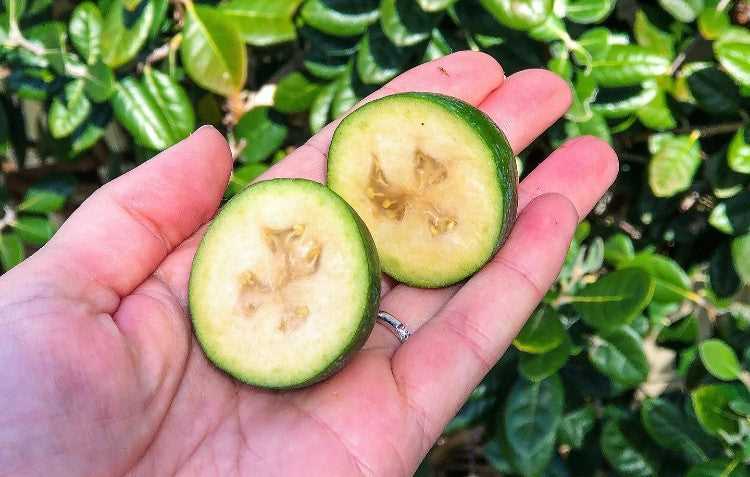
Feijoa trees have moderate water needs and require regular irrigation, especially during dry periods. It’s important to ensure that the soil is evenly moist but not waterlogged. Overwatering can lead to root rot, while insufficient water can cause fruit drop and reduced growth. Water the feijoa tree deeply once or twice a week, depending on the weather conditions and the moisture level of the soil.
Sunlight Requirements
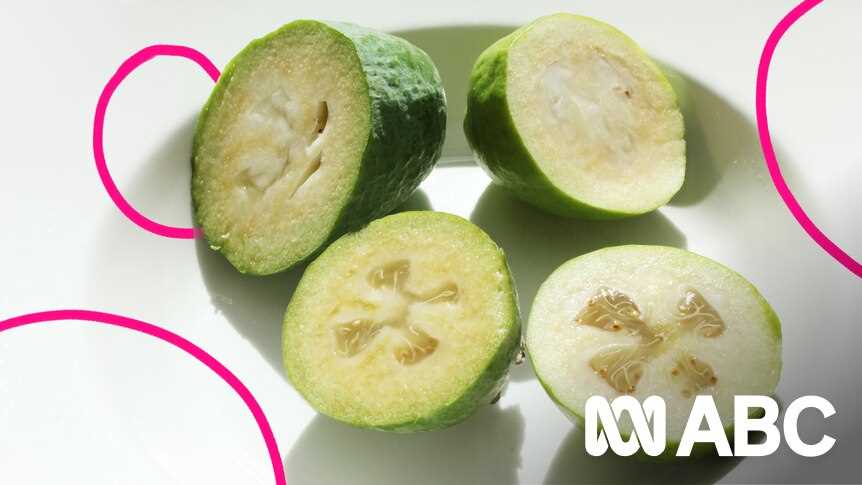
Feijoa trees thrive in full sun exposure, receiving at least 6 to 8 hours of direct sunlight per day. Adequate sunlight is crucial for photosynthesis, the process by which the tree converts light into energy. Insufficient sunlight can result in poor fruit development and decreased productivity. If you live in an area with limited sunlight, consider planting your feijoa tree in a location that receives the most sunlight during the day.
Feijoa Tree Care Tips
- Apply a layer of organic mulch around the base of the tree to help retain soil moisture, regulate temperature, and suppress weed growth.
- Prune your feijoa tree annually during the dormant season to maintain its shape and promote proper airflow and sunlight penetration.
- Fertilize your feijoa tree with a balanced organic fertilizer in early spring and late summer to provide it with the necessary nutrients for healthy growth and fruit production.
- Monitor the tree for any signs of pests or diseases, such as aphids, scale insects, or fungal infections. Treat these issues promptly to prevent further damage to the tree.
By paying attention to the soil, water, and sunlight requirements of your feijoa tree, you can ensure its health and encourage the development of delicious, homegrown fruit. With proper care and maintenance, your feijoa tree will reward you with an abundant harvest for years to come.
Container Selection and Preparation: Setting the Stage for Success
Feijoa, also known as pineapple guava, is an excellent fruit that can be grown in containers. With proper care and attention, you can enjoy the taste of homegrown feijoa even if you don’t have a garden. Here are some tips to help you select and prepare containers for growing feijoa:
1. Choose the Right Container
When selecting a container for feijoa, it’s important to choose one that is large enough to accommodate the plant’s root system. Look for a container with a minimum depth of 24 inches and a diameter of at least 18 inches. You can use a plastic or ceramic pot, as long as it has drainage holes at the bottom.
2. Prepare the Container
Before planting, it’s essential to prepare the container to provide optimal growing conditions for feijoa. Start by sterilizing the container to prevent the spread of diseases. You can do this by soaking the pot in a solution of 1 part bleach to 10 parts water for 15 minutes. Rinse the container thoroughly with water after sterilization.
Next, fill the container with well-draining potting soil. Feijoa prefers slightly acidic soil, so you can mix in some organic matter, such as compost or peat moss, to improve the soil quality. Leave about 2 inches of space at the top of the container to allow for watering.
3. Ensure Proper Drainage
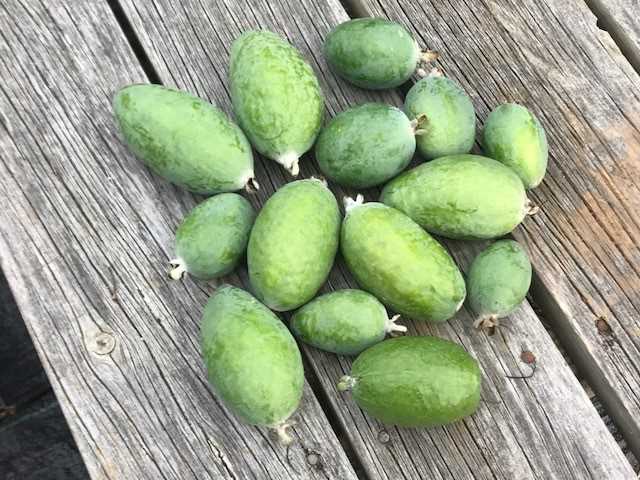
Feijoa plants don’t like to sit in water, so it’s crucial to ensure proper drainage in the container. Place a layer of gravel or small rocks at the bottom of the container before adding soil. This will help prevent waterlogging and promote good drainage.
4. Consider Container Placement
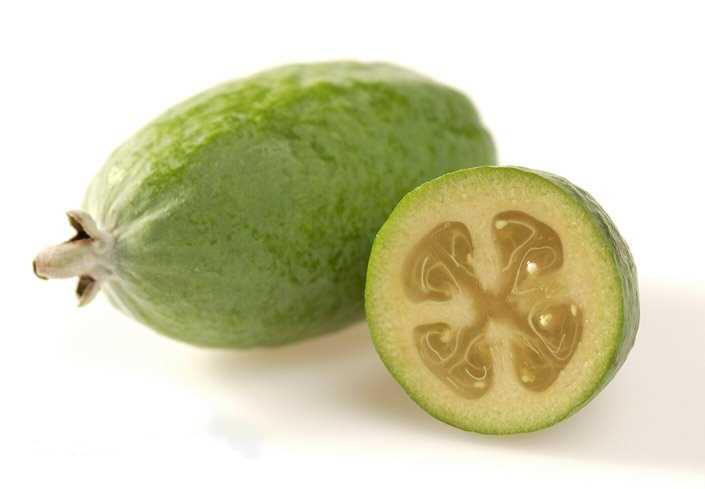
Feijoa plants thrive in full sun, so it’s essential to choose a suitable location for your container. Place the container in a spot that receives at least 6 hours of direct sunlight per day. Additionally, make sure the area is well-ventilated to prevent the buildup of excess humidity.
5. Provide Adequate Watering and Fertilization
Water the feijoa plant regularly to keep the soil moist but not waterlogged. Avoid overwatering, as this can lead to root rot. Feijoa plants also benefit from regular fertilization during the growing season. Use a balanced, slow-release fertilizer designed for fruit trees, following the manufacturer’s instructions.
By following these tips and providing the right conditions, you can successfully grow feijoa in containers and enjoy the delicious taste of homegrown fruit.
Selecting the Proper Container for Feijoa Trees
When growing feijoa trees in a garage, it is important to select the proper container to ensure their growth and productivity. Here are some tips on choosing the right container for your feijoa trees:
1. Select a container with adequate size
Feijoa trees need enough space for their roots to grow and spread. Choose a container that is at least 12-16 inches deep and 18-24 inches wide. This will provide enough room for the roots and allow for proper drainage.
2. Consider material and durability
Feijoa trees prefer containers made of durable materials such as plastic or terracotta. Plastic containers are lightweight and easy to move, while terracotta containers provide good drainage. Avoid containers made of metal, as they can heat up quickly and damage the roots.
3. Ensure proper drainage
Good drainage is crucial for feijoa trees to prevent waterlogging, which can lead to root rot. Look for containers with drainage holes at the bottom or consider drilling holes if needed. Using a layer of gravel or small rocks at the bottom of the container can also help improve drainage.
4. Check for insulation
If you plan to keep your feijoa trees in a cold garage, consider selecting a container with insulation. Insulated containers will help protect the roots from freezing temperatures and provide a more stable environment for growth.
5. Opt for a movable container
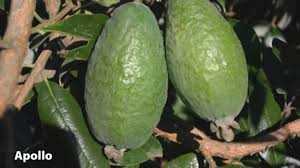
Feijoa trees may require different amounts of sunlight and temperature during different seasons. To ensure optimal growth, choose a container that is lightweight and easy to move around. This will allow you to adjust the tree’s position based on sunlight and temperature requirements.
By selecting the proper container for your feijoa trees, you can provide them with the ideal growing environment in your garage. Remember to consider size, material, drainage, insulation, and movability when choosing the container to ensure healthy and productive feijoa trees.
Preparing the Container for Feijoa Planting
Feijoas can be successfully grown in containers, making them a great option for those with limited outdoor space or who live in colder climates. Whether you choose to grow feijoa in a container indoors or in a garage, proper preparation of the container is essential for a successful harvest.
Choosing the Right Container
When selecting a container for planting feijoas, there are a few key factors to consider:
- Size: Look for a container that is at least 20 inches deep and wide to allow for proper root growth and development.
- Material: Choose a container made of a durable material, such as plastic or clay, that has good drainage holes.
- Mobility: Since feijoa plants may need to be moved indoors during the colder months, consider choosing a container with wheels for easy transport.
Preparing the Container
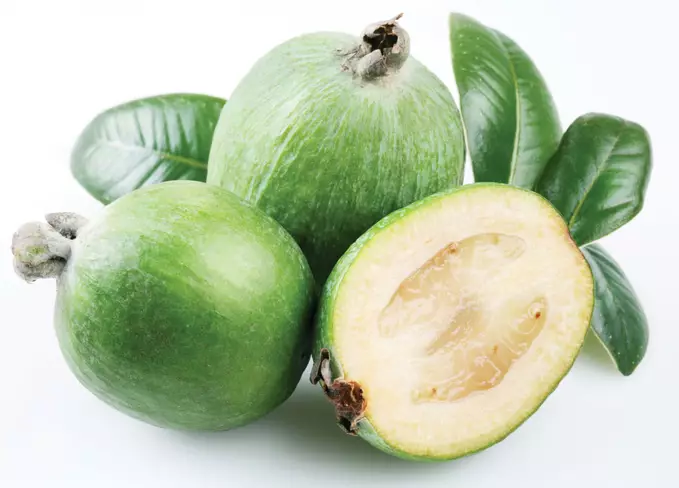
Before planting your feijoa in the container, take the following steps:
- Clean the container: If using a previously used container, clean it thoroughly with mild soap and water to remove any potential pathogens or contaminants.
- Add drainage: Ensure that the container has adequate drainage holes in the bottom to prevent waterlogging, which can lead to root rot. If necessary, drill additional holes.
- Line the container: Line the bottom of the container with a layer of gravel or small stones to further promote drainage.
- Fill with quality soil: Use a well-draining potting mix that is rich in organic matter. Avoid using heavy garden soil, as it can become compacted in containers.
Positioning the Container
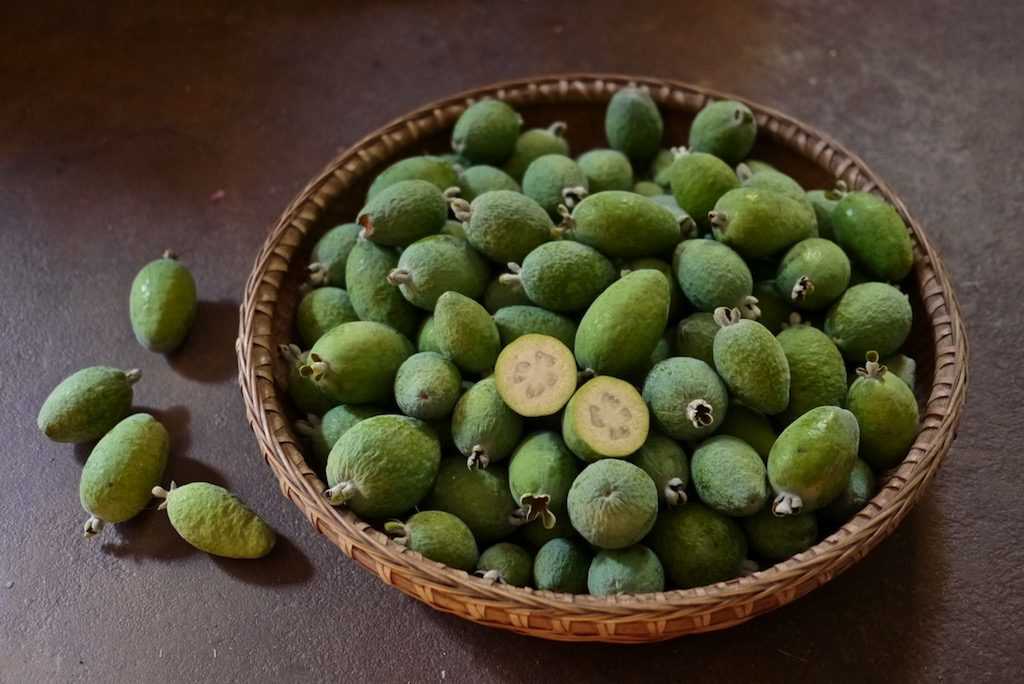
Once the container is prepared, consider these factors when deciding where to place it:
- Sunlight: Feijoa plants require at least 6 hours of direct sunlight each day, so place the container in a location that receives ample sunlight.
- Temperature: Feijoas are frost-hardy, but prolonged exposure to freezing temperatures can damage the plant, so choose a location that remains above freezing.
- Indoor vs. outdoor: If growing feijoa indoors, choose a well-ventilated area, such as a garage, where the plant can still receive adequate airflow and light.
By properly preparing the container for feijoa planting and considering the ideal positioning, you can create a suitable environment for your feijoa plant to thrive, even in a garage or other indoor space. With the right care and attention, you’ll be rewarded with delicious homegrown feijoas.
Feijoa Tree Planting and Care: Step-by-Step Guide
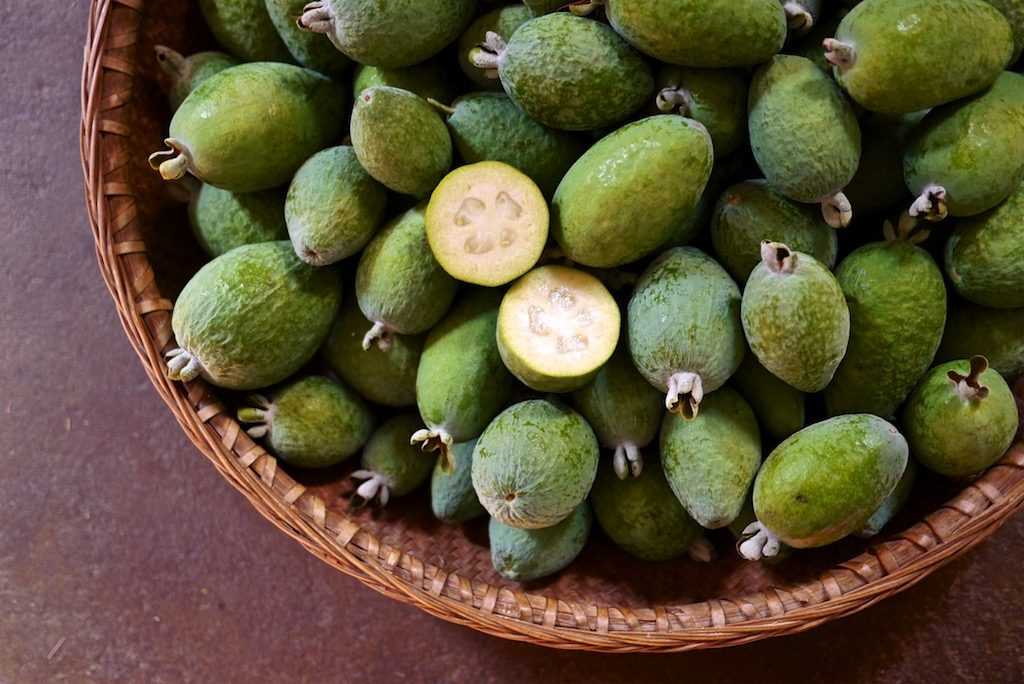
Feijoa trees, also known as pineapple guava, are popular for their delicious fruit and beautiful foliage. If you want to grow your own feijoa tree, follow these step-by-step planting and care instructions to ensure a healthy and productive tree.
1. Choosing a Location
Feijoas prefer a sunny location with well-draining soil. They can tolerate a wide range of soil types but thrive in slightly acidic soil with a pH of 6.0-7.5. Avoid planting in areas prone to waterlogging.
2. Planting the Tree
- Dig a hole twice as wide and slightly deeper than the root ball of your feijoa tree.
- Gently remove the tree from its container, taking care not to damage the roots.
- Place the tree in the hole, making sure it is centered and upright.
- Backfill the hole with soil, tamping it down gently to remove any air pockets.
- Water the tree thoroughly after planting.
3. Watering
Feijoa trees require regular watering, especially during dry periods. Water deeply once or twice a week, allowing the soil to dry out slightly between waterings. Avoid overwatering, as this can lead to root rot.
4. Fertilizer and Mulching
Feijoa trees benefit from regular fertilization to promote healthy growth and fruit production. Apply a balanced fertilizer in early spring and late summer, following the manufacturer’s instructions. Additionally, mulch around the base of the tree to conserve moisture and suppress weed growth.
5. Pruning
Pruning is essential for maintaining the shape and health of your feijoa tree. You can prune in late winter or early spring before new growth appears. Remove any dead, damaged, or crossing branches. Also, thin out the canopy to allow for better air circulation and light penetration.
6. Pests and Diseases
Feijoa trees are relatively pest and disease resistant. However, watch out for aphids, caterpillars, and fruit rot. Use organic insecticides or horticultural oils if necessary. Regularly inspect your tree for signs of disease or pest infestation.
7. Harvesting
Feijoas are typically ready for harvest in late autumn or early winter, depending on your location. The fruit should be slightly soft when gently squeezed. Twist the fruit to harvest it from the tree. Feijoas can be eaten fresh or used in various culinary preparations.
By following these step-by-step planting and care instructions, you can enjoy a bountiful harvest of delicious feijoas from your own tree. Happy growing!
Planting Your Feijoa Tree in the Container
Feijoa trees can be successfully grown in containers, making them perfect for growing in a garage or small indoor space. Here are some important tips to consider when planting your feijoa tree in a container:
1. Choosing the Right Container
Select a container that is at least 18 inches in diameter and 18 inches deep to allow room for the feijoa tree’s root system. Make sure the container has drainage holes to prevent waterlogged soil.
2. Soil Mix
Use a well-draining potting mix that is lightweight and has good moisture retention. A mix of equal parts potting soil, compost, and coarse sand or perlite works well for feijoa trees.
3. Planting the Tree
Place a layer of drainage material, such as pebbles or broken pottery, at the bottom of the container. Fill the container with the soil mix, leaving enough space for the root ball. Gently remove the feijoa tree from its nursery container and place it in the center of the container, ensuring that it is planted at the same depth as it was in the nursery container. Fill the remaining space with the soil mix and firm it gently around the tree.
4. Watering
Water the tree thoroughly after planting to settle the soil. Afterward, water the feijoa tree regularly, keeping the soil slightly moist but not waterlogged. Avoid overwatering, as it can lead to root rot.
5. Placement
Choose a location for your container-grown feijoa tree that receives full sun or at least 6-8 hours of direct sunlight each day. Feijoas thrive in warm temperatures, so keep the container in a location with temperatures between 60-80°F (15-27°C). You can move the container outdoors during the warmer months but ensure to acclimatize the tree gradually to avoid shock.
By following these tips, you can successfully plant and grow a feijoa tree in a container, allowing you to enjoy delicious homegrown fruit even in limited spaces like a garage or indoor area.
Essential Care Practices to Ensure Your Tree Thrives
Feijoa trees are relatively easy to grow, but they still require a certain level of care to thrive and produce the best-tasting fruit. Here are some essential care practices to follow:
- Planting: Choose a location with well-draining soil and full sun exposure. Dig a hole twice as wide and deep as the root ball and backfill with a mixture of compost and soil. Plant the tree slightly above the soil level to prevent water accumulation around the trunk.
- Watering: Feijoa trees have moderate water needs. Water deeply once a week during dry periods, ensuring the soil is evenly moist but not waterlogged. Avoid overwatering as it can lead to root rot.
- Fertilizing: Feijoa trees benefit from regular fertilization to promote healthy growth and fruit production. Apply a balanced fertilizer formula in early spring and again in late summer. Follow the recommended dosage on the fertilizer package.
- Pruning: Pruning helps shape the tree and improves air circulation, reducing the risk of diseases. Remove any dead, damaged, or crossing branches. Prune in late winter or early spring before new growth begins.
- Pest and disease control: Feijoa trees can be susceptible to pests such as aphids, mealybugs, and scale insects. Regularly inspect the tree for signs of infestation and treat with insecticidal soap if necessary. Also, monitor for diseases like fungal infections, and apply appropriate fungicides as needed.
By following these care practices, you can ensure that your feijoa tree is healthy and productive, giving you delicious homegrown fruit to enjoy for years to come.
Q&A:
Can I grow feijoa in my garage?
Yes, you can definitely grow feijoa in your garage. Feijoas can be grown in containers and can thrive in a garage environment if provided with the right conditions.
What are the ideal conditions for growing feijoa in the garage?
Feijoas require a temperature range of 60-80°F (15-26°C) and a humidity level of about 50-60%. They also need plenty of natural light or a grow light, and proper ventilation.
Can I use a grow light for growing feijoa in the garage?
Yes, you can use a grow light to provide the necessary light for feijoa plants. Make sure to choose a grow light that provides both blue and red spectrum light for optimal growth.
How often should I water feijoa plants in the garage?
Feijoa plants should be watered regularly, but not excessively. Water the plants when the top inch of soil feels dry, and make sure that the soil is well-drained to avoid overwatering.
How long does it take for feijoa plants to bear fruit in the garage?
Feijoa plants can take anywhere from 2 to 5 years to start bearing fruit, depending on the growing conditions and the age of the plant when it was initially planted.
Video:
5 ways to get your Feijoa or Pineapple guava to fruit in the desert!







